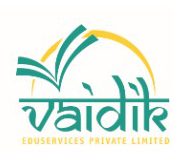The process of child development is dynamic and intricate, and each person experiences it in their own way. Children undergo quick cognitive, emotional, physical, and social changes from birth until puberty, which influence how they develop in the future.
Understanding how children are developing, spotting possible developmental delays, and offering early intervention when needed all depend on conducting developmental assessments.
Developmental assessment assists parents, educators, and professionals in making sure that children receive the support they require to realize their full potential, whether in healthcare settings, educational settings, or at home.
The value of child development assessments is found in their capacity to reveal a kid’s areas of strength and potential need for extra help. Since growth happens in a variety of areas, including language, motor skills, cognitive ability, and emotional regulation, thorough evaluations enable a comprehensive picture of a child’s development.
In addition to helping diagnose developmental abnormalities, these tests can be used as a guide to customize social and educational experiences to each child’s specific requirements.
However, there is no one-size-fits-all method for evaluating a child’s development. Depending on the child’s age, the particular developmental domain being evaluated, and the assessment’s setting, various techniques, instruments, and strategies are employed.
Standardized exams and organized screens are used in some assessments, while parent interviews, observations, and casual conversations are used in others. This blog examines the fundamentals of child development assessment, the different approaches taken, the difficulties encountered, and the most efficient ways to carry out developmental assessments.
The Importance of Child Development Assessment
It is essential to comprehend and keep an eye on kid growth for a number of reasons. First, it makes sure a child is reaching age-appropriate expectations and assists in identifying developmental milestones. Milestones offer standards for monitoring development and include crawling, walking, talking, and problem-solving.
Although children grow at their own rate, notable delays in reaching these developmental milestones could be a symptom of underlying problems that need to be addressed by a specialist.
Second, prompt intervention can result from early developmental delay detection, which is crucial for reducing long-term difficulties. Early detection can improve the management of conditions like learning difficulties, autism spectrum disorder (ASD), and speech and language problems.
Early intervention techniques can help children with developmental issues integrate more successfully into social and academic contexts, according to research.
Third, developmental evaluations give parents, educators, and medical professionals important information. In addition to advising parents on how to best support their children at home, they also assist schools in creating relevant learning experiences and notify medical experts about any necessary therapeutic or medical treatments.
Fundamentally, evaluating a child’s development involves more than just spotting issues; it also entails figuring out how the child learns, interacts, and develops in order to give them the best chance for success.
Techniques For Evaluating Child Development
Standardized tests, screenings, and observations are all used to evaluate a child’s development. Different approaches concentrate on different areas of growth, such as social, emotional, linguistic, cognitive, and physical development. Here are a few of the main techniques for assessment:
1. Screening And Monitoring For Development
A continuous process known as developmental monitoring involves parents, guardians, and educators observing a child’s development and behavior in normal contexts.
It entails monitoring developmental milestones and recording any worries regarding a child’s advancement. Continuous observation without formal testing is made possible by this informal assessment.
On the other hand, developmental screening uses checklists and standardized instruments to assess a child’s development at particular ages.
To evaluate a child’s speech, motor skills, problem-solving, and social skills, pediatricians and early childhood educators frequently utilize screening instruments like the Ages and Stages Questionnaire (ASQ) or the Denver Developmental Screening Test (DDST).
2. Developmental Assessments That Are Standardized
Standardized tests are used to measure particular developmental areas for a more thorough analysis. Usually, psychologists, speech therapists, or special education specialists perform these evaluations. Among the frequently utilized developmental tests are:
- The Bayley Scales of Infant and Toddler Development (Bayley-III) assesses young children’s and infants’ linguistic, motor, and cognitive development.
- Wechsler Preschool and Primary Scale of Intelligence (WPPSI) assesses young children’s cognitive and intellectual capacities.
- The Peabody Picture Vocabulary Test (PPVT) evaluates a child’s language development and receptive vocabulary.
- Children with potential developmental delays are assessed on their social, communicative, and everyday living skills using the Vineland Adaptive Behavior Scales.
3. Observational Evaluations
Observational assessments entail observing kids in their natural situations, like homes, playgrounds, and classrooms. Teachers and other caretakers record a child’s interactions with classmates, reactions to novel situations, and maneuvers through various social and educational situations.
Methods such as developmental checklists, structured play assessments Development Services, and anecdotal recordings offer important information about a child’s growth.
4. Reports From Parents And Teachers
Given how much time parents and educators spend with kids, developmental assessments heavily rely on their observations and comments. Structured interviews, teacher rating scales, and parent surveys are some of the tools used to collect data about a child’s behavior, interests, and abilities in a variety of settings.
5. Language And Cognitive Tests
Evaluating a child’s cognitive and language development is crucial to comprehending their capacity for learning and communication. Strengths and possible learning challenges can be found with the use of tests that assess linguistic, reasoning, memory, and problem-solving skills.
To measure speech and language development, speech-language pathologists may administer tests such as the Clinical Evaluation of Language Fundamentals (CELF) or the Expressive Vocabulary Test (EVT).
Difficulties in Evaluating Child Development
Despite the significance of developmental assessment, caregivers and professionals encounter a number of difficulties:
- Developmental Variability: Since children develop at varying speeds, it can be challenging to identify if a delay is transitory or a sign of a more serious problem.
- Cultural And Linguistic Differences: Results from standardized tests may not always be interpreted correctly due to cultural and linguistic variations.
- Restricted Access To Resources: It might be difficult to recognize and manage developmental difficulties at an early stage in many areas due to a lack of skilled specialists and developmental screening instruments.
- Parental Concerns And Stigma: Parents may put off required treatments because they are afraid of being stigmatized or labeled.
The Best Methods For Efficient Evaluation of Child Development
Professionals and caregivers should adhere to best practices in order to guarantee accurate and significant developmental assessments:
- Employ a Variety of Techniques: Not every facet of a child’s development can be captured by a single test. A complete picture is obtained by combining screens, observations, and standardized tests.
- Include a Variety of Viewpoints: A comprehensive evaluation is guaranteed with input from educators, parents, and medical professionals.
- Assure Cultural Sensitivity: When evaluating assessment results, take into account a child’s linguistic and cultural background.
- Promote Early and Frequent Assessments: To monitor growth over time, developmental assessments should start in early life and continue at various stages.
- Offer Resources and Support: Families should be given advice on what to do next, including intervention programs and educational support services, if a developmental issue is found.
Conclusion
The process of evaluating a child’s development is essential for determining their strengths, spotting delays, and directing any required interventions.
Professionals can generate a comprehensive picture of a child’s development by combining developmental screenings, standardized tests, observations, and family feedback.
Even if there are obstacles like developmental unpredictability and financial scarcity, adhering to best practices guarantees that kids get the help they require to flourish.
In the end, developmental evaluation is about giving every kid the chance to reach their full potential, not only about spotting possible issues.
Frequently Asked Questions
In order to promote a kid’s growth and learning, child development assessments assist in monitoring milestones, spotting delays, and offering early intervention.
A child’s expected level of development can be ascertained by employing developmental screening instruments, keeping an eye on milestones, and observing behavior.
Regular developmental evaluations should be placed if issues come up, particularly in early infancy.
For more assessment and potential intervention techniques, speak with a pediatrician, teacher, or child development professional.
No, in addition to standardized testing, developmental assessment also involves informal evaluations, screenings, parent and teacher reports, and observations.









